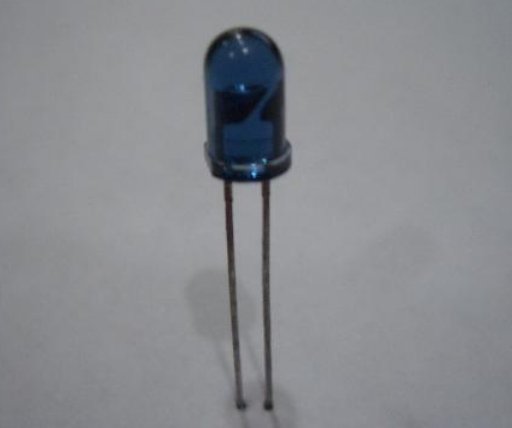Common infrared LED that emits infrared rays has the same appearance with visible light LED. Its appropriate operating voltage is around 1.4v and the current is generally smaller than 20mA. Current limiting resistances are usually connected in series in the infrared LED circuits to adjust the voltages, helping the LEDs to be adapted to different operating voltages.

When using infrared rays to control correspondent unit, the controlling distance is in direct ratio with the emitting power. In order to lengthen its controlling distance, infrared LED should be operated under pulse state as the effective transmitting distance of the pulsed light (modulated light) is in proportion with the wind-induced current of the pulses. Thus, by increasing the peak value (Ip) of the pulses, the emitting distance of the infrared LED can also be lengthened. One way to increase Ip is to diminish the duty ratio of the pulse; that is to reduce the width of the pulse (T). The duty ratios of the working pulses for some color TV’s infrared remote controllers are around 1/3-1/4; and for some other electronic products, the duty ratios of the infrared remote controllers can even be as small as 1/10. Through reducing the duty ratio of the pulses, the emitting distance for small power infrared LED can also be increased in a large extent. Ordinary infrared LEDs can be divided into the following three types: small power one (1mW-10mW), medium power LED (10mW-50mW) and large power LED (50mW-100mW and above). The modulated light can be generated by adding pulse voltage with specific frequency on the driving diode.
The controller with infrared LED can emit infrared rays to take control of correspondent unit, and at the controlled unit end, there is also a receiving device to turn the infrared light into electricity, such as infrared light receiving diode, photoelectric triode and so on. Emitting and receiving matched infrared diode has also been applied in practical use.
There are two emitting-receiving modes for infrared LED and the controlled unit, one is direct light emitting mode, and the other is reflecting light mode. In the direct light emitting mode, the emitting diode and the receiving diode are installed in the emitting end and the controlled unit end respectively, with a certain distance between them. As to the reflecting light mode, the lighting diode and the receiving diode are in parallel. Only when the infrared rays emitted by the diode were reflected by something can the receiving diode get the infrared rays, thereby stimulate the controlled unit to operate. Besides, infrared emitting circuit with double diodes bears higher power and longer functional distance.
Infrared LED chips with different wavelengths can be applied in extensive devices, for example:
1. Infrared LED chip with wavelength of 940nm: suitable to be used in remote controller, such as remote controllers for household appliances.
2. 808nm: suitable to be used in medical treatment appliances, space optical communication, infrared illumination and the pumping sources of the solid-state lasers.
3. 830nm: suitable to be used in the automated card reader system in freeway.
4. 840nm: suitable to be used in colored zoom infrared waterproof video camera.
5. 850nm: suitable to be used in video cameras that are applied in digital photography, monitoring system, door phone, theftproof alarm and so on.
6. 870nm: suitable to be used in video cameras in marketplace and crossroad.












